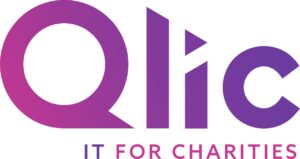
For nonprofits, email marketing remains one of the most cost-effective and impactful tools for fundraising, raising awareness, and building long-term relationships with supporters. With tight budgets and high expectations, charity marketing and fundraising teams rely immensely on email to communicate their mission and drive donations. But as essential as it is to engage donors, it’s equally necessary to handle their personal data responsibly and ensure compliance with GDPR and data protection regulations.
The numbers highlight just how compelling email marketing is for the sector. In 2022, UK nonprofits raised an average of £66 for every 1,000 fundraising emails sent, clear evidence of its high return on investment. What’s more, the average email list size for UK and Ireland nonprofits grew by 20% in 2023, continuing a brilliant upward trend over the past two years. This growing volume of data, however, also brings responsibilities in terms of data management for charities.
In particular, the General Data Protection Regulation (GDPR) is a legal framework that governs how personal data is collected, processed, and stored. GDPR applies to any organisation, including charities and micro-enterprises, that handles personal data from EU citizens or residents. Even if your nonprofit operates outside the European Union, if you interact with donors in the region, GDPR still applies. This has direct implications for how nonprofits collect email addresses, send campaigns, and supervise subscriber data.
In this blog, we’ll guide charity and nonprofit organizations through the process of employing effective nonprofit email marketing strategies while guaranteeing full GDPR compliance. We’ll explore common challenges that charities face when managing donor emails, share practical ways to streamline communications, and offer actionable tips that strike the right balance between meaningful engagement and regulatory adherence.
GDPR Essentials for Email Marketing for Nonprofits
There’s a common misconception in the charity sector that nonprofit organisations are somehow excused from the requirements of the General Data Protection Regulation (GDPR). This isn’t the case. Charities are fully subject to GDPR in the same way as any commercial business, specifically when it comes to donor communications. If your nonprofit sends fundraising appeals, event invitations, or newsletters via email, you must ensure your practices are GDPR compliant.
What Does GDPR Mean for Charities Specifically?
GDPR places rigorous obligations on how personal data, such as email addresses, donation history, payment details and engagement metrics, is collected, stored, and used. This is vital, as missteps in email marketing can lead to complaints, loss of donor trust, and potential legal consequences.
Because of the importance of this matter, an individual is often appointed to oversee the organisation’s data protection strategy, ensuring policies are in place and advising on best practices in areas such as email marketing. This figure is the Data Protection Officer (DPO). For many charities, especially larger ones, appointing a DPO is a serious step in managing risks.
To help charities build an effective foundation, the GDPR outlines seven core principles that should guide how sensitive data is handled. These are not optional; they form the backbone of compliant nonprofit data practices.
The Seven GDPR Principles Explained
Understanding how these seven GDPR principles apply to nonprofit email marketing can help your organisation build conviction and stay on the right side of the law:
-
Lawfulness, Fairness and Transparency
You must collect and use donor data in a lawful, fair, and transparent way. Donors should know what you’re doing with their information and why, specifically when signing up for email communications.
-
Purpose Limitation
Data must only be used for the specific purpose for which you collected it. If a supporter signed up for a newsletter, you cannot use that same data to send unrelated fundraising asks or communications without clear permission.
-
Data Minimisation
Only collect data that is directly relevant and necessary for your intended purpose. If all you need is an email address, don’t ask for full addresses or phone numbers unless you justly need them.
-
Accuracy
Make sure donor data is up to date. Regularly review and update email lists to avoid sending messages to inaccurate or outdated addresses.
-
Storage Limitation
Don’t keep donor data longer than needed. Set clear retention periods for your email lists and archive or delete records when applicable.
-
Integrity and Confidentiality (Security)
Keep donor information safe. Nonprofits must ensure sensitive data is adequately protected against accidental or deliberate harm, loss, or dissemination of the personal data they process. This includes having appropriate technical and organisational measures in place, such as encrypted email tools and access controls.
-
Accountability
Your organisation must be able to exhibit compliance. This includes keeping records, updated policies, certification schemes and evidence that your team is following GDPR-compliant practices.
Lawful Basis for Processing Donor Data
Under GDPR, you must have an acceptable legal reason, known as a lawful basis, for collecting and using personal data in your email marketing campaigns. For charities sending direct marketing messages, the two most appropriate bases are consent and legitimate interest.
Choosing the right one depends on the nature of your communication and your association with the supporter.
Consent
Valid consent must be freely given, specific, informed, and definite. This means supporters must take a clear affirmative action, such as ticking an unchecked box, to agree to receive your emails. Pre-ticked boxes, inactivity, or bundled consent (e.g. agreeing to terms and marketing at once) do not qualify.
For nonprofits, this often means clearly stating the purpose of your emails at the point of data collection and making it simple for supporters to manage their preferences or unsubscribe.
In general, it’s important to understand that there are two types of consent: implied consent and explicit consent.
Implied Permission
When someone gives you their email for business reasons but doesn’t clearly say they want marketing emails.
Explicit Permission
This happens when you ask someone directly if they want to receive marketing emails, and they say yes. They must take action like:
- Giving written consent
- Checking a box on your form
- Confirming through double opt-in (clicking a link in a confirmation email)
Legitimate Interest
In some cases, charities may rely on legitimate interest as a lawful basis, particularly when contacting existing supporters or donors with updates related to their past involvement. However, this approach requires a careful balancing test; your organisation’s interest in sending the email must not overrule the individual’s right to privacy.
Before sending your email, you should think about whether there’s a less disruptive method that could accomplish the same objective.
You should also pay attention to your privacy notice, which should clearly state which lawful basis you are relying on and outline the purposes of the processing. Transparency is essential.
As with other GDPR responsibilities, your Data Protection Officer (or data lead in smaller charities) plays a fundamental role in ensuring your lawful basis is appropriate, well-documented, and in line with supporter expectations.

Why GDPR Compliance is Important for Nonprofit Email Marketing
For charities, email GDPR compliance isn’t just about ticking legal boxes, but also about maintaining the trust and confidence of stakeholders and supporters. Nonprofits often handle sensitive personal data, such as donation history, financial details, or information related to causes supporters care greatly about. Protecting this data is an essential step in responsible data management and supporter engagement.
Done right, GDPR-compliant email marketing is a strategic opportunity. By treating donor data with respect, charities can build stronger relationships, boost transparency, and ultimately increase engagement and fundraising results.
Building and Maintaining Trust
Trust is the foundation of every successful charity. Donors want to know that their personal information is being handled with care and used correctly. By clearly communicating how data is collected, stored, and used in your email campaigns, you reinforce your organisation’s integrity. In a crowded sector, a strong reputation for transparency and trustworthiness can set your charity apart and aid long-term donor loyalty.
Legal Obligation
GDPR is a binding legal requirement for any organisation processing personal data of EU or UK citizens, including charities. Failure to comply can result in major consequences, including heavy fines, legal action, and reputational damage. Being proactive with your compliance helps mitigate these risks and ensures your nonprofit is operating within the law.
Ethical Responsibility
Beyond legal duties, there is an evident moral obligation to respect the privacy and autonomy of your supporters. Ethical data handling reflects your organisation’s values, social responsibility and goodwill. These are fundamental traits in the third sector, where doing the right thing with donor data is non-negotiable.
Ensuring Sustainable Engagement
Ensuring data security and compliance encourages nonprofits to adopt clearer, more respectful communication practices. Instead of sending blanket emails to disengaged lists, you focus on quality over quantity, targeting the right messages to the right people at the right time. This leads to greater open rates, better engagement, and long-term supporter relationships that are based on trust and consent.
Building a GDPR-Compliant Email Strategy
Creating an effective email marketing strategy that aligns with GDPR requirements is crucial for charities to achieve their mission. It ensures that your communications are not only impactful but also respectful of your supporters’ privacy. From consent to campaign planning, every step must prioritise both compliance and donor trust.
Here’s how your charity can build an effective, GDPR-compliant email marketing approach.
Follow Consent Management Best Practices
Consent is at the core of GDPR compliance. Charities must obtain clear, affirmative consent before sending any marketing emails. This means your sign-up forms should use simple, specific language and include an unticked checkbox explaining exactly why the information is being collected and how it will be used.
Whenever you collect personal data, whether through your website, donation forms, or event registrations, confirm that the opt-in process is explicit and transparent. A compliant form might include wording such as: “Yes, I would like to receive updates about your work and fundraising activities via email.”
We also recommend maintaining a record of when and how consent was given, including the exact language presented at the time.
For legacy data collected before GDPR came into effect, consider running re-permission campaigns. These campaigns request updated consent from supporters and help clean your email lists by ensuring that only those who still wish to engage with your charity remain subscribed.
Choose a Reliable Email Service Provider
Your choice of email service provider (ESP) plays a significant role in maintaining compliance. Look for platforms with built-in GDPR tools and transparent privacy practices. Reliable providers such as Mailchimp, HubSpot, Campaign Monitor, and GetResponse offer features like:
- Consent tracking and contact audit trails
- GDPR-compliant sign-up forms
- Easy-to-manage unsubscribe options
- Secure data storage and user access controls
These email marketing tools help streamline the process of complying with GDPR and allow your team to focus more on engagement and less on risk.
Email List Segmentation for Compliance and Effectiveness
Smart segmentation isn’t just a marketing best practice, it’s also a way to reinforce compliance. By segmenting your email list based on consent type and communication preferences, you ensure that your messages are always relevant and welcome.
Segmentation also helps decrease unsubscribes and boost open and click-through rates. Here are a few strategies for GDPR-friendly email segmentation:
- By consent type: Only send fundraising appeals to those who’ve clearly opted in for that content.
- By donor persona: Group supporters by giving history, location, or campaign interest to create more personalised experiences.
- By behaviour: Segment based on past interactions, like opening past emails or attending events, while always respecting privacy limits.
This approach supports targeted, meaningful communication and shows donors you value their time and preferences.
Email Campaigns Designed with Privacy in Mind
Privacy should be embedded in your email campaign planning from the beginning. If your email provider doesn’t supply a GDPR declaration, you’ll need to include one that outlines:
- The types of personal data collected (e.g. names, email addresses, donation history)
- How and why the data is processed
- The security measures in place to protect donor data from data breaches
- Data retention policies (how long you keep supporter information)
- The right to opt out or withdraw consent at any time
Implementing privacy impact assessments before launching new email initiatives, such as a donor re-engagement campaign, can also help detect potential risks and demonstrate accountability.
Finally, always include a clear unsubscribe option in every email. Not only is this required by law, but it also gives supporters confidence that they’re in control of their data and communication preferences.
Streamlining Donors’ Email While Maintaining GDPR Compliance
Many charities, especially smaller organisations, often work with limited budgets and small teams; being able to streamline and scale email marketing processes is necessary to maximise reach, save time, and achieve goals faster. Implementing email workflows allows nonprofits to scale their marketing efforts while remaining GDPR compliant. When done right, it supports better engagement, compliance, and boosts a charity’s operational efficiency.
- Start by setting up automated sequences such as GDPR-compliant welcome emails for new subscribers and timely donation acknowledgements. These should include transparent consent options and allow supporters to easily manage their preferences.
- Ensure event-triggered emails maintain compliance. These are automated emails sent in response to specific user actions (e.g., event registration, donation, form submission). Ensure you have clear consent to send these emails. The consent should be specific to the type of event and subsequent communications.
- Distinguish between transactional emails, like registration or confirmation, and marketing emails (e.g., promoting future events). Transactional emails may have different consent requirements, but marketing emails always require a clear opt-in.
- Embrace digital transformation and use automation to handle data access or deletion requests in line with GDPR individual rights. This is referred to as Data Subject Access Request (DSAR), which grants individuals the legal right to request information about how their data is used or processed. Charities can automate the Subject Rights management with AI-powered tools like data management software, such as OneTrust, that quickly help you locate and provide data upon request. AI can also help charities streamline tasks like list segmentation, consent tracking, and content generation.
- Data mapping automation is another valuable step. It helps identify what supporter data you hold, where it’s stored, and how it’s used, which is important for GDPR compliance and data hygiene.
- Automate re-engagement campaigns and event-triggered emails ensures timely, relevant outreach that respects supporter consent.
- Use email marketing platforms with automation features for re-engagement campaigns that respect consent in email marketing for nonprofits, by sending a re-confirmation email to inactive subscribers, asking them to explicitly opt-in again.
- Don’t forget to create modular, reusable email templates that include all necessary compliance elements like privacy notices and unsubscribe links while keeping messages engaging.
Closing Thoughts
GDPR compliance and effective nonprofit email marketing are not at odds, they go hand in hand. By embracing responsible data practices, your charity can build greater donor relationships, enhance campaign performance, and protect supporter trust. From clear consent management and smart segmentation to automation and secure data handling, each step helps create a sustainable and impactful email strategy.
Maintaining GDPR email compliance doesn’t have to be overwhelming. With the right tools, processes, and guidance, your nonprofit can streamline email communications, save time, and stay focused on your mission, all while respecting donor privacy.
Get in Touch
Want to learn more about GDPR compliance and data management in the third sector and how Qlic for nonprofits can help you? Get in touch with the Qlic Team here.






